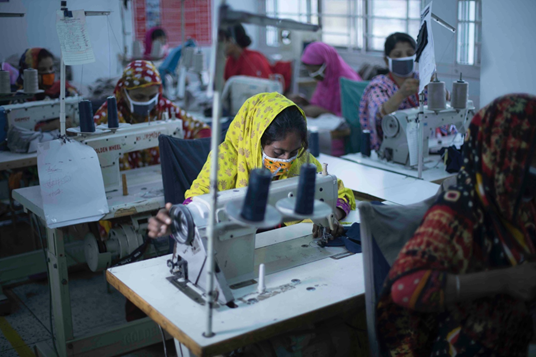

In 2020, The Centre was commissioned by UNICEF to carry out a child rights rapid assessment in India’s garment industry, focusing on the deeper supply chain of three key garment manufacturers representing a combined workforce of close to 8,000 people. The goal of this assessment was to understand general workplace management and working conditions as well as specific and general child rights issues. Based on the findings in the factories, The Centre analysed the situation from a child rights and business perspective, highlighting the significance of the identified risks and what this means for business.
Approaches of this rapid assessment included desk research, key informant interviews, focus group discussions (FGD), and participant observation (for on-site or video interviews).
Desk research enabled the assessment team to gain a basic understanding of the Indian RMG industry, labour conditions, child rights issues of concern, inform and prepare for research tool development, and collect secondary data for analysis and reporting.
Primary data was collected through semi-structured interviews (key informant interviews [KII]) and focus group discussions (FGDs) with factory or workshop management and workers. Adopting a child rights-centred approach, primary data revolving around the below child rights impact areas was collected:
Workers’ income and wage calculation
Working hours
Social security and health(care)
Child labour
Employment and protection of juvenile/young workers
Childcare needs and gaps
Access to education
Maternity protection and breastfeeding support
Grievance mechanisms for workers
Analytically, the assessment was guided by a Risk Assessment Criteria Matrix based on ISO 31000, and lists the key issues, contributing factors to risks identified, and the potential impact of such risks on child rights, and assigns a ranking in the order of probability (likelihood of such risks occurring) and magnitude (consequence, the strength of impact).
The findings and recommendations of this assessment provided UNICEF with a useful insight into prevalent challenges and emerging trends that will inform future interventions.
If you would like to find out more about our child rights risk assessment service, please visit our services page or contact us.
By using this website, you agree to our use of cookies. We use cookies to provide you with a great experience and to help our website run effectively.